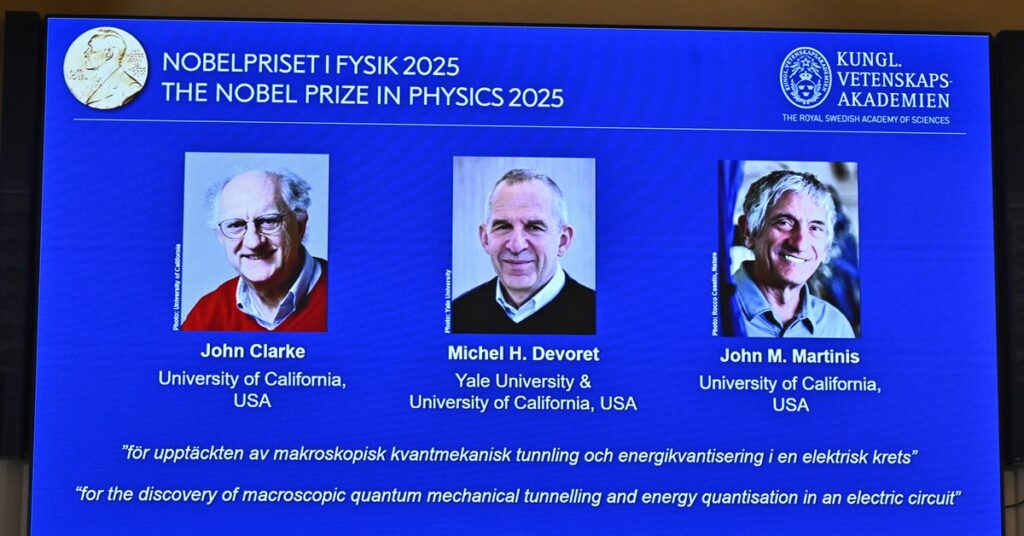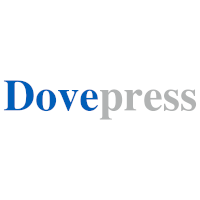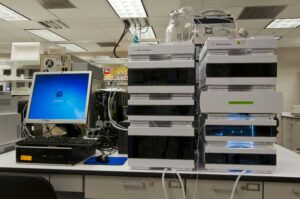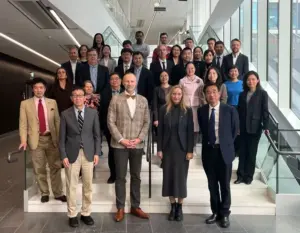
John Clarke, Michel H. Devoret, and John M. Martinis have been awarded the Nobel Prize in Physics for their groundbreaking research on quantum tunneling, a seemingly esoteric concept that is now at the forefront of digital technology advancement. The announcement was made on Tuesday, marking a significant milestone in the field of quantum mechanics.
Clarke, 83, conducted his pioneering work at the University of California, Berkeley, while Martinis carried out his research at the University of California, Santa Barbara. Devoret’s contributions came from his affiliations with both Yale University and the University of California, Santa Barbara. Speaking to reporters by phone, Clarke expressed his astonishment at receiving the prize, stating, “To put it mildly, it was the surprise of my life.” He also lauded his fellow laureates, acknowledging that “their contributions are just overwhelming.”
Quantum Mechanics: From Theory to Application
The Nobel committee highlighted that the trio’s work in the 1980s laid the groundwork for the development of “the next generation of quantum technology, including quantum cryptography, quantum computers, and quantum sensors.” Olle Eriksson, Chair of the Nobel Committee for Physics, emphasized the ongoing relevance of quantum mechanics, noting, “It is wonderful to be able to celebrate the way that century-old quantum mechanics continually offers new surprises. It is also enormously useful, as quantum mechanics is the foundation of all digital technology.”
Quantum mechanics, a field over a century old, explores the subatomic realm where traditional physics often defies logic. In this microscopic world, particles can exist in multiple states simultaneously, and quantum tunneling allows them to pass through barriers that seem impenetrable. The work of Clarke, Devoret, and Martinis has helped translate these abstract concepts into practical applications, potentially revolutionizing computing and communication.
Expert Insights and Implications
Richard Fitzgerald, editor-in-chief of Physics Today, remarked on the significance of the laureates’ work, stating, “What the three physicists did is taking the scale of something that we can’t see, we can’t touch, we can’t feel and bringing it up to the scale of something recognisable and make it something you can build upon.” He emphasized the potential of quantum computers and sensors, which could lead to highly sensitive measurements and secure cryptographic systems.
Mark Pearce, a professor of astrophysics and member of the Nobel Physics Committee, further elaborated on the practical applications, explaining, “Quantum computers is one very sort of obvious use, but they’re also can be used for quantum sensors, so to be able to make very sensitive measurements of, for example, magnetic fields, and perhaps also for cryptography, so to encode information so it cannot be easily listened to by a third party.”
It is the 119th time the prize has been awarded. Last year, artificial intelligence pioneers John Hopfield and Geoffrey Hinton won the physics prize for helping create the building blocks of machine learning.
Nobel Prize Legacy and Future Announcements
This year’s Nobel Prize in Physics is part of a long-standing tradition of recognizing transformative scientific achievements. The Nobel announcements continue with the chemistry prize on Wednesday and literature on Thursday. The Nobel Peace Prize will be announced on Friday, followed by the Nobel Memorial Prize in economics on October 13.
The award ceremony will take place on December 10, commemorating the anniversary of Alfred Nobel’s death in 1896. Nobel, a wealthy Swedish industrialist and the inventor of dynamite, established the prizes to honor those who have conferred the greatest benefit to humanity. The prizes carry not only immense prestige but also a cash award of 11 million Swedish kronor (approximately $1.7 million).
As the world anticipates further Nobel announcements, the recognition of Clarke, Devoret, and Martinis underscores the profound impact of quantum mechanics on modern technology and the limitless potential of scientific exploration.





